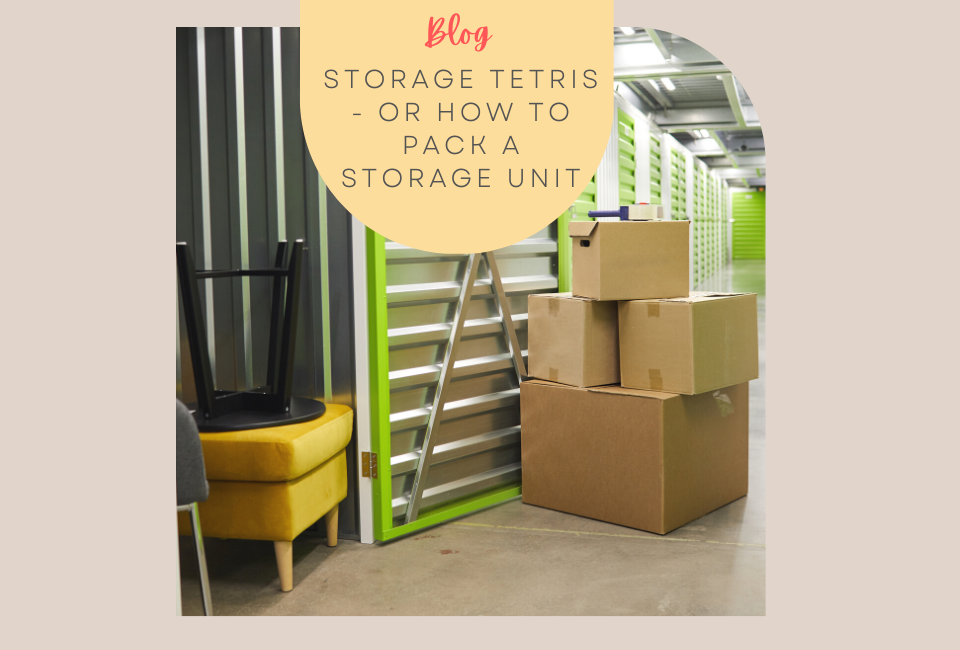Organize and Maximize Your Outdoor Time

Self-storage can help make your camping more organized.
With spring on our doorsteps, thoughts of camping trips are on many minds. Maximize the time you spend camping and lessen the work that goes into the set up with a few organization and storage tips from some long-time camping pros at our storage office.
Making yourself a couple of pre packed containers will help get out the door quickly for those spurs of the moment camping trips driven by great weather or a little extra time off. Your first container will be non-perishable food, label it as such so there is no guessing what’s inside. The second container will have toiletries. And if you are tenting consider a third container.
Container one: non-perishable food. Think about quick and easy meals, dry soup mix, cereal in small, sealed containers, graham crackers and chocolate bars ready for smores night, trail mix, granola or protein bars, jerky, freeze dried meals, instant coffee, drink powders or shelf stable milk products.
Container two: Biodegradable toilet paper, Hand sanitizer, biodegradable shampoo, toothbrush and toothpaste, quick drying towel, feminine products, a first-aid kit, or first-aid supplies.
If you are tenting consider a third container that has kitchen equipment like a can opener, tin foil, cutting board, knives, paper towel, weatherproof matches, or a BBQ lighter, cookware, travel mugs, utensils, a sharp knife, biodegradable dish soap, water bottles, trash bags, a dish towel and pot scrubber. This could mean doing a double up purchase, so you are not stealing from the kitchen.
Pro tip: If you are glamping or renting a condo somewhere have a kit on hand that contains, favorite spices, gravy mixes, cutting board, knives, dish cloth and tea towel, rope, corn holders, salt, pepper, and sugar because not every short-term rental comes with these items.
Happy Trails… 
….. oh yes, now you don’t have to unpack these contains in colder months. Now, let’s consider where and when you are keeping all this summer camping gear during the cold months.
A 5 by 10 storage unit will hold a person’s camping gear. Take some time and wipe down your tent, tarps, storage containers, and small equipment. If you found un-used items, its now time to think if they can come off your list for next summer. Things like oars, water skis and life jackets can stand up in a corner of your storage unit in a laundry basket to keep them together. Pull out all batteries from lamps or other equipment to avoid damage from corrosion that can happen when these items sit.
Keep your heavy items at the bottom of your unit, putting the lighter containers or boxes on top to maximize your space.
A hint to help keep all your items dry over the winter months is to keep all those little silica packets that you find coming in nearly everything you purchase. Also to avoid musty smells consider hanging your tent and sleeping bags instead of storing them in their stuff sacks.
A little organization and storage wisdom will help get you get quickly on your way to your next adventure.
*Remember, if life takes you on the road long term, we have offices in Lacombe and Medicine Hat








 Want to know a secret to taking some of the stress out of moving? Plastic wrap! Plastic wrap (also known as stretch wrap) is one moving supply that you shouldn’t skip. It’s a great way to protect your furniture from scratches and scuffs. Also, use it for wrapping things that are hard-to-pack like rugs, furniture, and bed rails. And, because there is no adhesive on plastic wrap there is no sticky residue left on your furniture. Here are some other stretch wrap tips from our moving experts.
Want to know a secret to taking some of the stress out of moving? Plastic wrap! Plastic wrap (also known as stretch wrap) is one moving supply that you shouldn’t skip. It’s a great way to protect your furniture from scratches and scuffs. Also, use it for wrapping things that are hard-to-pack like rugs, furniture, and bed rails. And, because there is no adhesive on plastic wrap there is no sticky residue left on your furniture. Here are some other stretch wrap tips from our moving experts. 




